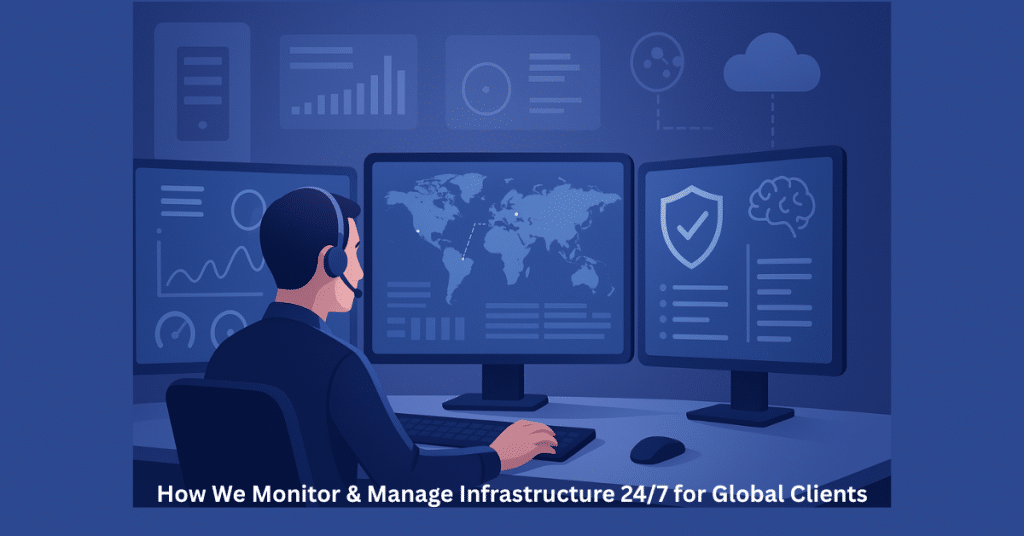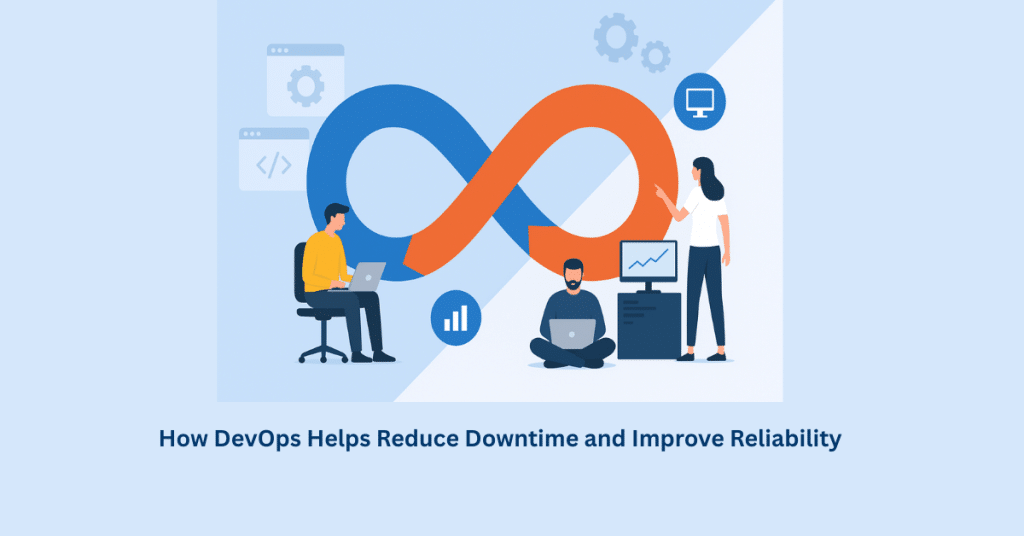Site Reliability Engineering (SRE) is a discipline that combines software engineering and IT operations to create scalable and reliable systems. But what exactly is SRE, and why is it essential? At its core, SRE aims to improve the reliability of services while allowing for rapid development and deployment. By implementing monitoring, automation, and incident response practices, SRE helps organizations maintain high availability and performance, ultimately enhancing the user experience.
SRE teams define service-level objectives (SLOs) and manage error budgets, ensuring systems meet reliability and feature demands. This approach fosters collaboration between development and operations teams, breaking down traditional silos and promoting a culture of shared responsibility. As businesses increasingly rely on technology, adopting SRE practices becomes crucial for delivering dependable services that meet customer expectations.
What is Site Reliability Engineering?
Site Reliability Engineering (SRE) combines software engineering with IT operations to enhance service reliability, availability, and performance. Originating at Google, SRE aims to create scalable and highly reliable systems by applying engineering principles to operations tasks. This approach enables organizations to manage complex systems while ensuring that they can effectively meet user demands.
The key principles of SRE include:
- Service-Level Objectives (SLOs): SRE teams define clear service performance targets, ensuring that reliability goals are measurable and achievable. These objectives help guide decision-making and resource allocation.
- Error Budgets: SRE uses error budgets to balance the need for new features with system reliability. This concept allows teams to innovate while maintaining acceptable service performance levels.
- Automation: SRE emphasizes automating repetitive tasks to reduce manual intervention and minimize human error. This leads to more efficient operations and frees up engineers to focus on higher-value activities.
- Incident Management: SRE involves structured processes for responding to incidents, ensuring quick resolution and learning from failures to prevent future occurrences.
The overarching goal of SRE is to create a reliable and efficient system that can adapt to changing demands while delivering a seamless user experience. By integrating these principles, organizations can balance innovation and reliability.
Why is SRE Important?
Site Reliability Engineering (SRE) plays a vital role in today’s tech-driven landscape for several reasons:
- Enhanced Collaboration: SRE promotes better collaboration between development and operations teams. By integrating these functions, SRE fosters a culture of shared responsibility, ensuring that both teams work together towards common goals.
- Improved System Reliability: SRE focuses on maintaining high availability and service performance. This reliability is crucial for businesses, as even minor outages can lead to significant revenue and customer trust losses.
- Faster Incident Response: SRE teams can quickly identify and resolve incidents with established processes and automation. This agility minimizes downtime and ensures that users experience fewer disruptions.
- Data-Driven Decisions: SRE relies on metrics such as service-level objectives (SLOs) and error budgets to guide decisions. This data-driven approach helps teams prioritize improvements and allocate resources effectively.
- Scalability: As businesses grow, their systems must scale efficiently. SRE practices ensure that services can handle increased loads without sacrificing performance.
- Enhanced Customer Experience: Ultimately, SRE leads to a better user experience. Reliable services increase customer satisfaction and loyalty, driving business success in a competitive market.
By adopting SRE, organizations position themselves to thrive in an increasingly complex digital environment.
Key Concepts in Site Reliability Engineering
Site Reliability Engineering (SRE) relies on several key concepts that help maintain system reliability and performance. Understanding these concepts is essential for anyone looking to implement SRE practices effectively.
Monitoring and Observability
Monitoring and observability are critical for maintaining the health of applications and services. They allow teams to detect issues before they impact users.
- Application Monitoring: This involves tracking the performance and availability of applications in real time. Tools like Prometheus and Grafana can help visualize metrics, enabling teams to identify anomalies quickly.
- Gradual Change Implementation: Instead of deploying extensive updates simultaneously, SRE advocates for gradual changes. Techniques such as canary releases and feature flags allow teams to test new features on a small scale before full deployment, minimizing risk and potential downtime.
- Automation for Reliability Improvement: Automation plays a vital role in SRE. By automating repetitive tasks such as deployments, monitoring, and incident response, teams can reduce human error and improve system reliability. Tools like Kubernetes and Terraform can help automate infrastructure management.
Metrics and Indicators
Metrics and indicators provide quantitative service performance measures, helping teams understand how well their systems function.
- Service-Level Objectives (SLOs): SLOs are specific goals set for system performance, such as uptime or response time. They provide a clear target for reliability and help teams prioritize their work.
- Service-Level Indicators (SLIs): SLIs are the measurements used to assess whether SLOs are being met. For example, if an SLO states that a service should be available 99.9% of the time, the SLI would measure the actual uptime of that service.
- Error Budgets: An error budget is the allowable threshold of errors or downtime within a specified period. It helps teams balance reliability with feature development. If the error budget is exceeded, teams may need to focus on improving reliability rather than pushing new features.
Incident Response and Automation
Effective incident response is crucial for minimizing downtime and maintaining user trust.
- Incident Response Process: This involves a structured approach to handling incidents when they occur. The process typically includes detection, diagnosis, mitigation, and resolution. A well-defined incident response plan ensures that teams can act quickly and efficiently when issues arise.
- Automation Tools and Techniques: Automation can significantly enhance incident response. Tools like PagerDuty and Opsgenie can automate alerting and escalation processes, ensuring the right team members are notified promptly. Additionally, runbooks can be automated to guide teams through common incident resolution steps, speeding up recovery times.
By understanding and implementing these key concepts, organizations can create a robust Site Reliability Engineering practice that enhances system reliability and improves overall performance. This foundation allows teams to respond to incidents effectively, monitor system health, and maintain high service levels, ultimately leading to a better user experience.
SRE Roles and Responsibilities
Site Reliability Engineer's Role
A Site Reliability Engineer (SRE) plays a pivotal role in ensuring that services are reliable, scalable, and efficient. Here are some key responsibilities of an SRE:
- Monitoring and Incident Management: SREs are responsible for setting up monitoring systems to detect issues in real-time. They also manage incidents, troubleshoot problems, and ensure quick recovery from outages.
- Capacity Planning: SREs analyze system performance and usage patterns to forecast future needs. They ensure that infrastructure can handle expected loads without compromising performance.
- Automation: SREs focus on automating repetitive tasks to reduce manual intervention. This includes automating deployments, monitoring, and incident responses.
- Performance Optimization: SREs continuously assess and improve system performance. They identify bottlenecks and implement solutions to enhance service speed and reliability.
- Documentation and Knowledge Sharing: SREs maintain documentation of systems, processes, and incidents. They share knowledge with development and operations teams to foster a learning culture.
Balancing Operations and Development Tasks
One of the unique aspects of the SRE role is the balance between operations and development. SREs often straddle both worlds, which can be challenging but rewarding. Here are some ways they achieve this balance:
- Collaboration with Development Teams: SREs work closely with development teams to understand application architecture and design. This collaboration helps them anticipate and address potential reliability issues early in the development process.
- Participating in Code Reviews: SREs often participate in code reviews to ensure that new features and changes adhere to reliability standards. Their insights can help prevent issues before they reach production.
- Implementing Best Practices: SREs advocate for best practices in coding, testing, and deployment. They encourage developers to write reliable code and implement features that enhance system stability.
- Time Allocation: SREs allocate their time between operational tasks (e.g., monitoring, incident response) and development tasks (e.g., automation, performance improvements). This balance allows them to contribute to both reliability and innovation.
SRE Workflows and Processes
SRE in the Software Development Lifecycle
SRE practices are integrated throughout the software development lifecycle (SDLC). Here’s how SRE fits into various stages of the SDLC:
- Planning: During the planning phase, SREs collaborate with product managers and developers to define service-level objectives (SLOs) and indicators (SLIs). These metrics guide the development process and set clear reliability goals.
- Development: As developers write code, SREs provide input on reliability considerations. They encourage using patterns and practices that enhance system resilience, such as circuit breakers and retries.
- Testing: SREs contribute to testing strategies by advocating for chaos engineering and load testing. These practices help identify weaknesses in the system before deployment.
- Deployment: During deployment, SREs monitor the rollout, ensuring that new changes do not negatively impact system reliability. They often use canary releases or blue-green deployments to minimize risk.
- Operations: After deployment, SREs are responsible for monitoring and incident management. They analyze performance data, respond to incidents, and implement post-mortem reviews to learn from failures.
Collaboration with DevOps Teams
SRE and DevOps share similar goals, making collaboration essential for success. Here’s how SREs work alongside DevOps teams:
- Shared Responsibility: Both SREs and DevOps teams share the responsibility for system reliability. This shared ownership fosters a culture where everyone is accountable for the performance of the services they build.
- Communication: Regular communication between SREs and DevOps teams is crucial. They hold joint meetings to discuss reliability goals, incident responses, and ongoing projects.
- Tool Integration: SREs and DevOps teams often use the same monitoring, deployment, and incident management tools. This integration ensures that both teams access the same data and insights.
- Continuous Improvement: Both teams focus on continuous improvement. SREs provide feedback on operational challenges, while DevOps teams share insights on development bottlenecks. This collaboration drives enhancements in both areas.
Implementing SRE in practice requires a clear understanding of the roles and responsibilities of site reliability engineers, effective workflows, and strong collaboration with DevOps teams. Organizations can achieve excellent service reliability and performance by integrating SRE principles throughout the software development lifecycle.
Benefits of Adopting SRE
Improved System Reliability and Availability
- Consistent Performance: SRE practices focus on monitoring and maintaining system performance, ensuring that services are consistently available to users.
- Proactive Issue Resolution: By implementing automated monitoring tools, SRE teams can identify potential issues before they escalate, leading to fewer outages and disruptions.
Faster Incident Response and Resolution
- Streamlined Incident Management: SRE teams establish clear protocols for incident response, enabling faster identification and resolution of problems.
- Post-Incident Reviews: After incidents, SRE teams conduct thorough reviews to understand root causes, allowing for continuous improvement and prevention of similar issues in the future.
Increased Developer Productivity
- Focus on Development: By automating operational tasks, SRE frees developers from routine maintenance, allowing them to focus on building new features and improving existing ones.
- Collaboration Between Teams: SRE fosters a culture of collaboration between development and operations, reducing friction and improving overall productivity.
Challenges in Implementing SRE
Organizational Culture and Mindset Shift
- Breaking Down Silos: Transitioning to an SRE model requires a cultural shift within the organization. Teams must move away from traditional silos and embrace shared responsibility for system reliability.
- Acceptance of Failure: SRE promotes the idea that failures are learning opportunities. Organizations must cultivate a mindset that views incidents as chances to improve rather than setbacks.
Skill Gaps and Training Needs
- Need for Specialized Skills: SRE requires a unique blend of skills, including software engineering, systems administration, and incident management. Organizations may need help finding or developing talent with the necessary expertise.
- Ongoing Training: Continuous education is crucial for SRE teams to stay updated on the latest tools and best practices. Organizations must invest in training programs to ensure their teams can handle evolving challenges.
Integrating SRE with Existing Processes
- Alignment with Current Workflows: Implementing SRE practices may require significant changes to existing workflows and processes. Organizations must ensure that SRE integrates smoothly with their current development and operations practices.
- Balancing Innovation and Stability: SRE aims to balance rapid development and system stability. Organizations must navigate the complexities of maintaining this balance while delivering new features and updates.
If you need more information about Site Reliability Engineering or are looking for SRE services, We Geeks Solutions is here to help. Our team of experts can guide you through implementing SRE practices tailored to your organization’s needs, ensuring you achieve optimal system reliability and efficiency.




